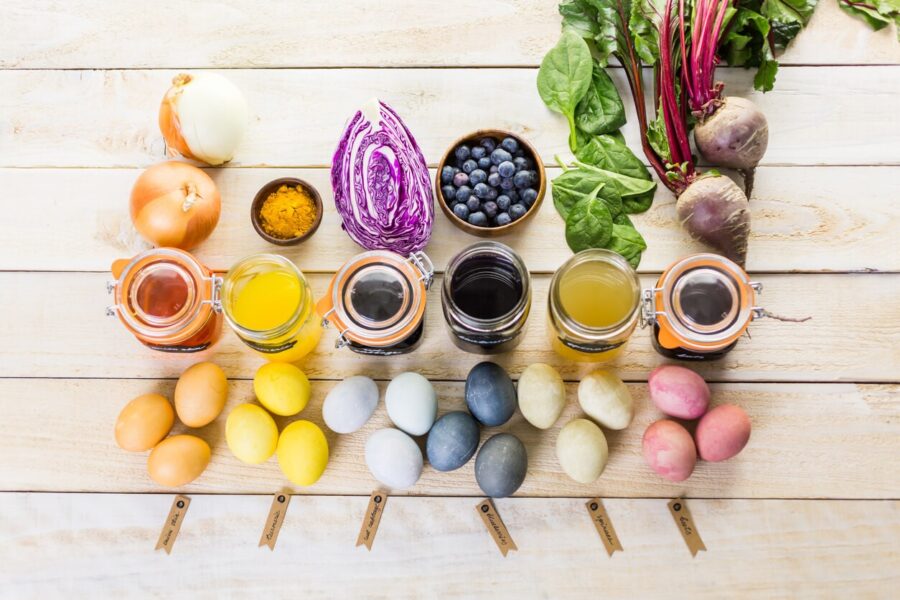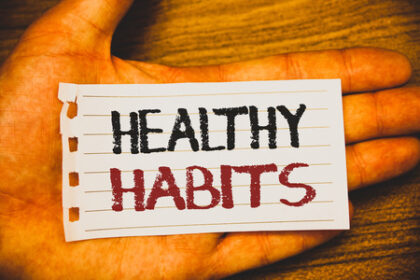Written By: Selia Cox, FNP
As we go through the grocery store, illuminating the entrances are the bright colored peeps, jelly bird eggs and the packets of coloring to dye eggs. Synthetic dyes are what gives these products their hue. These are a few examples of fun-colored spring products that contain toxic chemicals that can impact our health. There are many internal and external environmental factors such as food additives, stress, lifestyle, inflammation and air pollution that impact our total toxic load in our body. Within article, we will focus on the impact that some of our favorite holiday items made with synthetic dyes can have on our health.
In the early 90’s the FDA had banned Red#3 (R3) dye in cosmetics as it was carcinogenic in larger doses. However, this dye is still in many foods, drinks, and medications. Such as canned fruits, candies including peeps, bird eggs, skittles, popsicles, meal replacement shakes and even sausage casings. In addition, we see Red#40 (R40), Yellow #5 (Y5) and Yellow #6 (Y6) with these being the most used either alone or most of the time mixed. Dyes Y5 and Y6 can also be found in Doritos, ready to use frostings, and Cap N’Crunch, Trix, Fruity Cheerios to name a few. R40 products include Hi-C fruit punch, Yoplait strawberry kiwi yogurt and many of the products already mentioned. You will find these dyes in highly processed foods that also contain added sugars.
A study in the late 90’s had shown that the consumption of R3 dye was found to stimulate the growth of estrogen positive human breast cancer cell. This was slightly seen with Y6 and Y5 dyes. During this time, the use of dyes averaged about 70mg/kg per day with an average increase of 4-5% each year. This amount was 30 times greater than what was used in the study. This study suggested that these artificial dyes in addition to plastics and pesticides is another external source of exposure to estrogen mimicking compounds. Estrogen mimicking compounds is known as xenoestrogens that can disrupt our hormone balance within our body ((Dees et al., 1997).
Fast forward over 25 years later, we have seen more movement with literature showing the correlation of how artificial dyes can also impact behavioral changes in children. A systematic review looked at various studies including children <19 years old assessing how dyes added in nutrition plan impacted neurobehavioral outcomes. The average dose of the mixed dyes was 55.8mg per day and both human and animal trials were consistent with statistically significant association with adverse behavioral outcomes (Miller et al., 2022).
A study completed by Stevens et al, 2015, was one of the first to calculate the amounts of dyes in various products. When more than one dye is used in a product this can increase the amount of mg per serving and can be higher than the FDA daily acceptable amount. US FDA reports the acceptable daily intake of R3 is 2.5mg/kg, Y5 is 5 mg/kg, 3.75mg/kg for Y6 and R40 is 7mg/kg. These allowances were set based on population data and how much dye was approved in that fiscal year during the late 60’s early 70’s (FDA, 2011).
Some examples below show how various products combined within a day can increase the daily amount of each dye beyond the acceptable limit. This also is dependent on age, weight, and servings of products. Let’s say we have a 50lb child (22.7 kg), using the acceptable intake range mg per kg of R3 would equal 56.75mg for the day of that one dye. Just with a couple servings of Fruit Cheerios can exceed this amount.
| Product | Serving Size | Dyes | Amount (mg) |
| Fruit Cheerios | ¾ cup | R40, Y6 | 31.8mg |
| Dannon Raspberry Light and Fit | 1 container | R40 | 5.1mg |
| Keebler Cheese and Peanut Butter Crackers | 8 crackers | Y6 | 14.4mg |
| *Kraft Macaroni & Cheese | 1 cup prepared | Y6, Y5 | 17.6mg |
| M&Ms Milk Chocolate | 48 pieces | R40, Y5, Y6 | 29.5mg |
| Orange Freezer Pop | 1 pop | Y6, R40 | 13.4mg |
| Total | 111.8mg |
*1 year after this study came out (2016), Kraft replaced Yellow 5 and Yellow 6 with annatto, paprika, turmeric
What Can We Do?
- Incorporate more whole foods and hydrate!
- Move our bodies each day
- Spring clean your cupboards and see what you can swap out for healthier options and eliminate products with artificial dyes
- I encourage you to read nutrition labels and see if you can identify any of these dyes mentioned and look to swap them out for a healthier, cleaner options. Environmental Working Group (EWG) has a great website where you can find the item you are looking for and will rate the product based on health concern.
- Using your favorite fruits and vegetables to create your own dye.
- Below is an example of fun ways to incorporate more color into your egg decorating events without artificial dyes. Recipe can be found here
The Formulas for Naturally Dyed Easter Eggs
Per cup of water use the following:
- 1 cup chopped purple cabbage = blue on white eggs, green on brown eggs
- 1 cup red onion skins = lavender or red eggs
- 1 cup yellow onion skins = orange on white eggs, rusty red on brown eggs
- 1 cup shredded beets = pink on white eggs, maroon on brown eggs
- 2 tablespoons ground turmeric = yellow eggs
- 1 bag Red Zinger tea = lavender eggs
- Add one tablespoon white vinegar to every cup of strained dye liquid.
- For every dozen eggs, plan on using at least four cups of dye liquid.
If you prefer a product premade, there are some plant-based food colorings out there such as Earth Paint Natural Egg Dye or Super Natural Plant Based Food Colors.
There are other key factors that are important when thinking about reducing our body burden and that is how well we can eliminate them. Some ways to help support our detoxification pathways is to hydrate, sweat, ensure we are moving our bowels each day, finding time for relaxation, eating more whole foods and less processed sugars. It is the long term, cumulative dosing of chemicals such as these that can eventually lead to negative changes to our health. By eliminating our intake of these harmful dyes is a way to reduce the amount of toxins within our body. Which can help to improve sleep, energy, mood and better balance with hormones, gut, and immune health.
There are many influences that can impact our total toxic load and even reduce our capacity to eliminate and detoxify appropriately. It is important to work with a trained practitioner that can help to identify these individual impacts and tailor a treatment plan based on your biochemistry. I am looking forward to working with you this spring!
Happy Spring!




